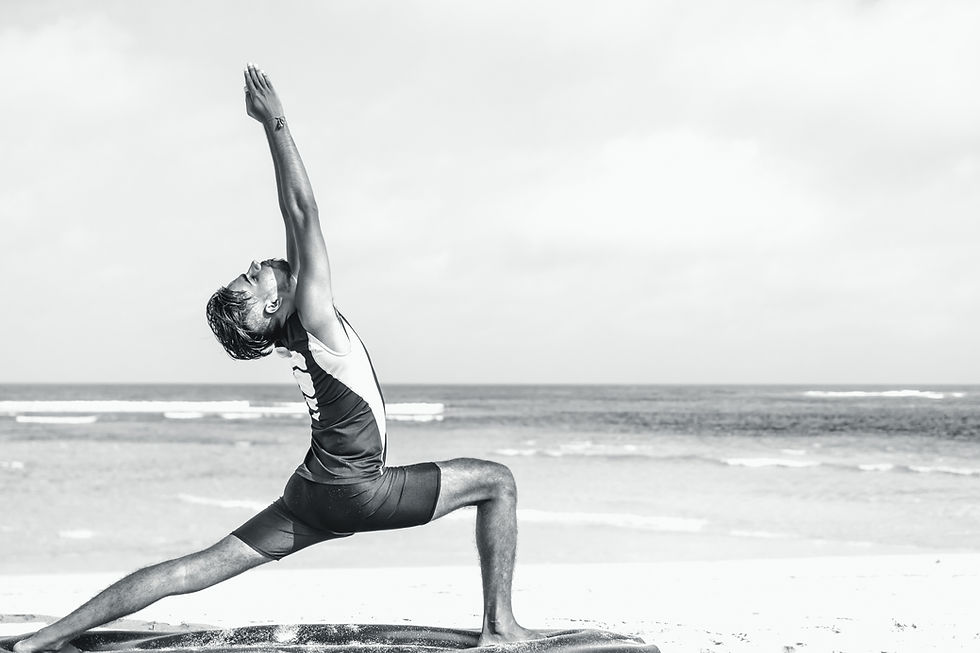Post-Traumatic Stress Disorder (PTSD) is a challenging and often debilitating condition that can arise after experiencing or witnessing a traumatic event. However, amidst the struggles, many individuals find a surprising silver lining: Post-Traumatic Growth (PTG). PTG refers to the positive psychological change experienced as a result of the struggle with highly challenging life circumstances. One powerful and holistic approach to fostering PTG is through the practice of yoga.

Understanding Post-Traumatic Growth
Post-Traumatic Growth is a concept that highlights the potential for individuals to develop in meaningful ways following trauma. This growth can manifest in several areas, including:
Increased personal strength: Feeling stronger as a person for having gone through adversity.
Improved relationships: Developing deeper, more meaningful connections with others.
New possibilities: Discovering new opportunities and pathways in life.
Spiritual development: Experiencing a deeper sense of spirituality or a renewed faith.
Appreciation for life: Having a greater appreciation for the value of life and the small joys it brings.
While PTSD focuses on the negative impacts of trauma, PTG encourages us to explore the potential for positive change and transformation.

The Healing Power of Yoga
Yoga, an ancient practice that combines physical postures, breathing exercises, and meditation, offers a holistic approach to healing that can significantly contribute to PTG. Here's how yoga can support this transformative journey:
1. Mind-Body Connection
Yoga strengthens the mind-body connection, which is often disrupted in individuals with PTSD. Through mindful movement and awareness of breath, yoga helps practitioners reconnect with their bodies, fostering a sense of safety and grounding. This reconnection is crucial for healing and can pave the way for personal growth.
2. Regulating the Nervous System
One of the core aspects of PTSD is a dysregulated nervous system. Yoga, particularly practices that focus on deep, diaphragmatic breathing, can activate the parasympathetic nervous system, promoting relaxation and reducing stress. This regulation helps individuals move from a state of hyperarousal to one of calm, making space for reflection and growth.
3. Emotional Release and Processing
Trauma often leaves individuals with repressed emotions and unresolved feelings. The physical postures and breathwork in yoga can help release these pent-up emotions. As emotions surface, practitioners have the opportunity to acknowledge and process them in a safe environment, facilitating emotional healing and growth.
4. Building Resilience and Strength
Yoga poses, especially those that require balance and strength, can build physical resilience and, by extension, mental resilience. The discipline and perseverance cultivated on the mat translate to a greater sense of inner strength and the ability to navigate life's challenges more effectively.
5. Cultivating Mindfulness and Presence
Mindfulness is a cornerstone of yoga practice. By focusing on the present moment, individuals can break free from the cycle of reliving past traumas or worrying about the future. This presence allows for a greater appreciation of life and the small victories along the journey of healing and growth.
6. Fostering Community and Connection
Many yoga classes offer a supportive community where individuals can connect with others on similar healing journeys. This sense of belonging and mutual support can enhance social connections, one of the key components of PTG.

Practical Tips for Integrating Yoga into Healing
Start Slow: Begin with gentle yoga classes or practices specifically designed for trauma survivors. Styles such as Hatha, Restorative, and Yin Yoga can be particularly beneficial.
Find the Right Instructor: Look for instructors trained in trauma-sensitive yoga who understand the unique needs of individuals with PTSD.
Create a Safe Space: Practice in a quiet, comfortable space where you feel safe and at ease. Use props like blankets and blocks to support your practice.
Be Patient: Healing and growth take time. Be patient with yourself and honor your own pace.
Combine with Other Therapies: Yoga can complement other forms of therapy, such as talk therapy or EMDR (Eye Movement Desensitization and Reprocessing), enhancing overall healing.
To conclude...
Yoga offers a compassionate and holistic path to Post-Traumatic Growth, guiding individuals through the challenges of PTSD towards a life of renewed strength, deeper connections, and profound appreciation. By embracing the mind-body practices of yoga, survivors can transform their trauma into a catalyst for growth, discovering new dimensions of themselves and their potential.
Whether you're a seasoned yogi or new to the practice, the journey of healing and growth through yoga is accessible to everyone. Step onto your mat with an open heart and mind, and let the transformative power of yoga guide you towards a brighter, more resilient future.





Comments